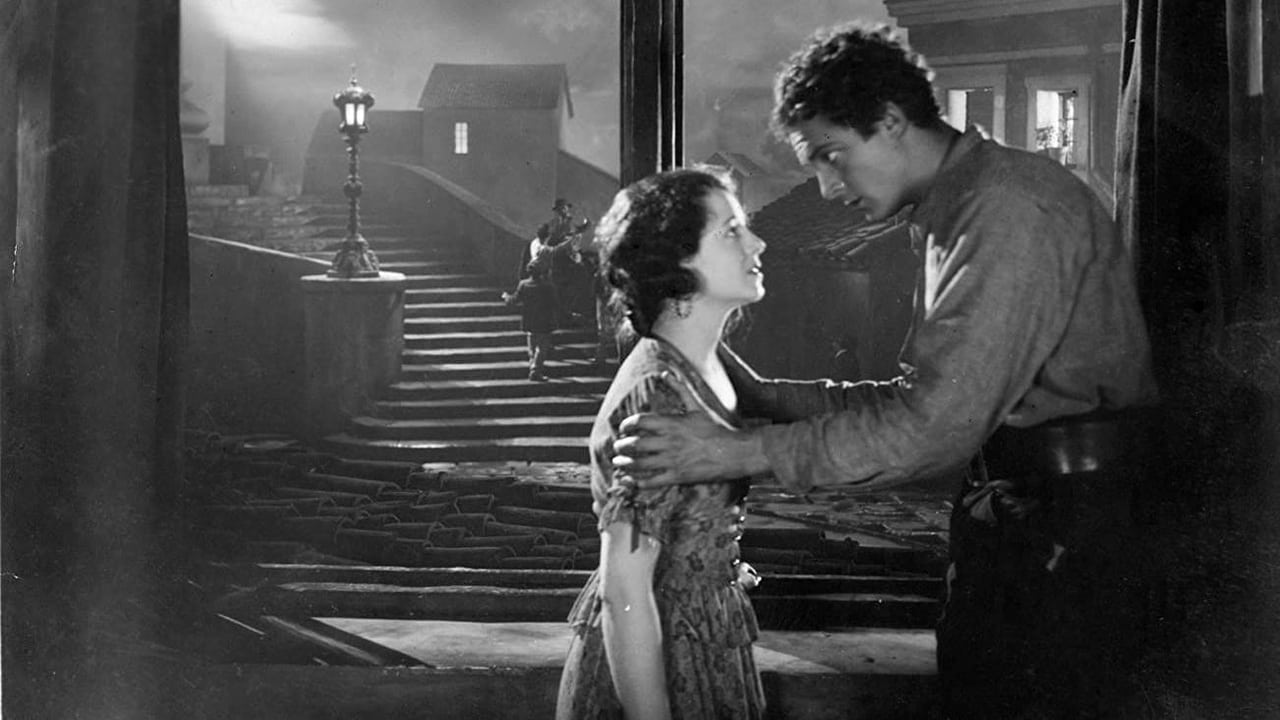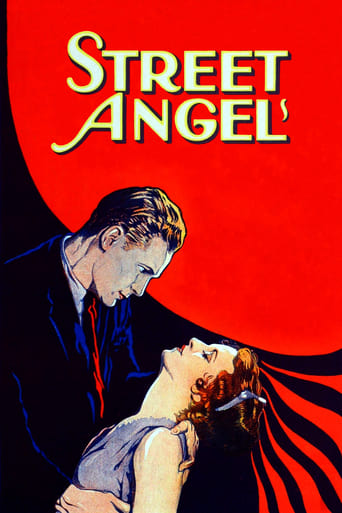

Just so...so bad
... View MoreEach character in this movie — down to the smallest one — is an individual rather than a type, prone to spontaneous changes of mood and sometimes amusing outbursts of pettiness or ill humor.
... View MoreWorth seeing just to witness how winsome it is.
... View MoreAmazing worth wacthing. So good. Biased but well made with many good points.
... View MoreStreet Angel (1928)What a great surprise!Just as sound was all the talk and all the necessity of Hollywood, and just as Fox Studios has released a quasi-sound masterpiece in the fall of 1927 called "Sunrise," a few months later comes "Street Angel" continuing in a silent mode from Fox's great director Frank Borzage. And it's lively, fast, well acted, and frankly terrific.Janet Gaynor above all, like Lilian Gish in her films, lifts this story through sheer acting and screen presence. She's a live wire and a tender victim, a fun and emotional and interesting person. This comes across without the supposed exaggerations of silent cinema, and is enough to make you forget the silence completely. Her partner in all this, Charles Farrell, is also good, though a bit stiff and pretty like Gary Cooper would be a decade later.Equally terrific is the filming--the photography and editing, and the necessary set design and atmospheric effects (night, fog, great heights, tiny rooms). Photographer Ernest Palmer had already made a slew of films at Fox and was at the top of his game, and he had just worked with Borzage (and Gaynor and Farrell) in the equally well made "7th Heaven" the year before. It's beautiful, glowing, subtle stuff.The plot? More interesting that you'd expect at first, and more complex, though with a strand of inevitable sweetness, too. The title refers to a prostitute, and streetwalking girls are a recurring part of the film, from the fringes. The place is Italy in the 1920s, and Gaynor plays Angela who turns to the street to try to get enough money to save her mother's life. Things quickly spin out of control from there, with jail and a small time circus and a life of impoverishment in Naples for our two leads. Temporarily. Farrell plays a painter with some talent but imperfect ambition and no business sense, so promise turns to heartache. And then things shift again.If there is anything constant in this movie it is the good inner souls of the main characters, and so you suspect they will at least have a chance of surviving the hardship that seems to never quite be their own fault. I'm sure most of the audience identified with that then, just as I could now. The scenes are really dramatic, the interactions between the actors completely fresh and honest, and the photography fluid and modern. Yes, it's a sentimental "old" movie, still, of course, but with so much going on so well, you'll be glad.
... View MoreThis one has the strengths and weaknesses of the late silent films. It is not as good as 'Sunrise,' but it has some wonderful b/w deep field shots, with a distant town down a mountainside and a busy harbor for a background. Also -- some fine Monet-like fogbound portside shots with the characters walking in silhouette toward each other. Some of the scenes are too long and too sentimental -- to show off Janet Gaynor's skill at pathos, and the theme music and whistling is badly overused. But the portrait, which becomes "Madonnaized" as an old master does capture Gaynor's pure character. It is taken from the lovers as her purity is (for the time being) stolen from her, but then in the final scene the image and reality are reunited. In a sense the Madonna blesses the two reunited lovers. That's well done and is reminiscent of the use of portraits in Poe's "Oval Portrait" and Wilde's "Picture of Doran Grey." I wonder how the young artist realized that it was his picture or, if he did, registered no surprise at finding it over the altar of a church. But the use of the picture as a kind of psychic energy was carried through nicely.
... View MoreIt's a moody and often expressionistic film like Gaynor's "Sunrise" (1927)...which I consider far superior in technique and story. Two things I find VERY DISTURBING about "Street Angel" --(1) She asks the cop for 'one little hour' with her fiancé' before going to jail, but she went to jail right after her mom died without burying her or explaining to the cops or the judge. (2) She does not explain to her fiancé' why she's going away and, after she gets out, does not try and explain either. For this reason, I do not find Gaynor's character very appealing or sympathetic at all. She's definitely no "angel" in this movie. I feel sorry for the painter guy. The film's only redeeming qualities are the scenes inside their apartment which are tenderly and exquisite.
... View MoreOn the heels of their successful pairing in Seventh Heaven, Janet Gaynor and Charles Farrell returned as star-crossed lovers again in Street Angel. By the title of the film, one can tell Gaynor is somehow going to be mixed up with prostitution. She turns to it briefly, although not entirely (thankfully for 1928 audiences), because her ailing mother needs some medicine she can not otherwise afford. She's caught but escapes to a traveling circus and falls in love with an idealistic painter played by Farrell. Farrell, though handsome, was not the best of actors and faded from the limelight when the sound era took over. The story is pure fluff and contrived to say the least, but its Gaynor's performance, the cinematography, and Frank Borzage's direction which carry the film. Borzage owes much to German Expressionism in his shooting of this film. The first half of the film moves at a good pace, but the second half drags incessantly at times with close-ups of Gaynor that linger forever, capturing her waif-like, angelic look. The whistling Gaynor and Farrell do throughout the film grows more tiresome with each succeeding episode. As in many silent films, the pace varies in average films of the period. This was one of the films which included sound effects, musical interludes, and transition music but not spoken dialog in the transition period between silents and sound. **1/2 of 4 stars.
... View More